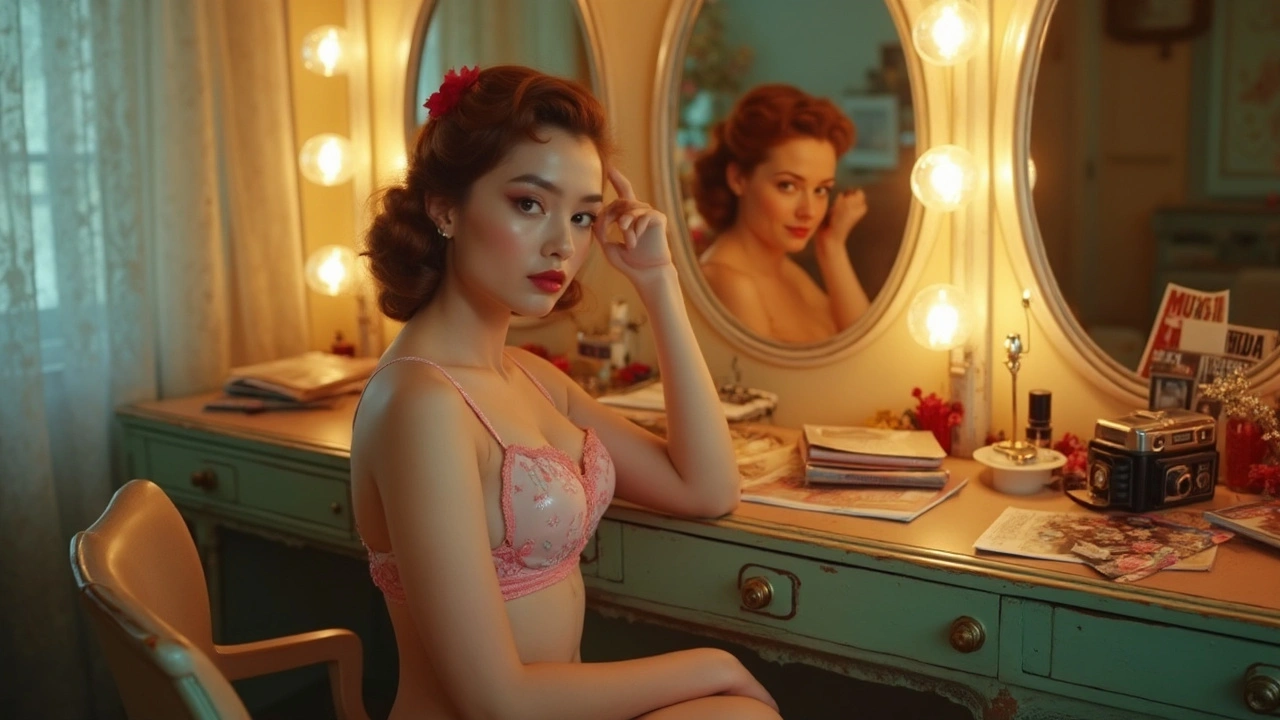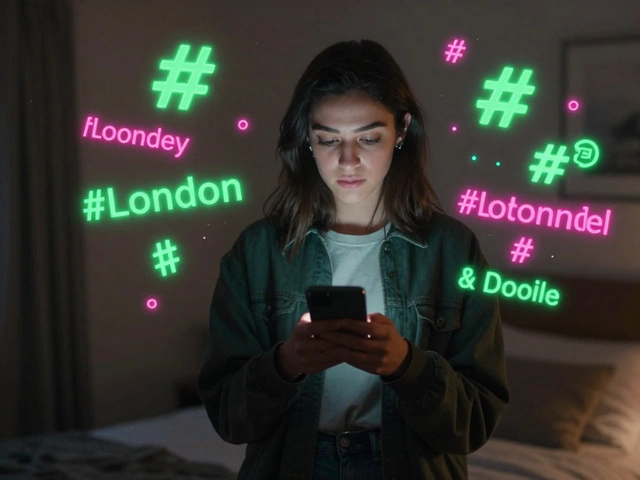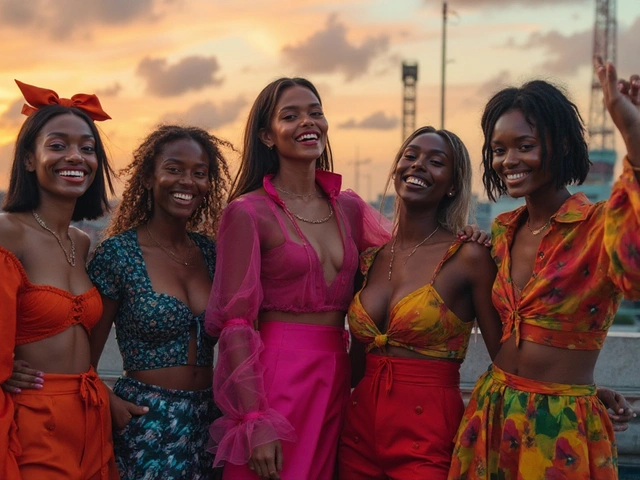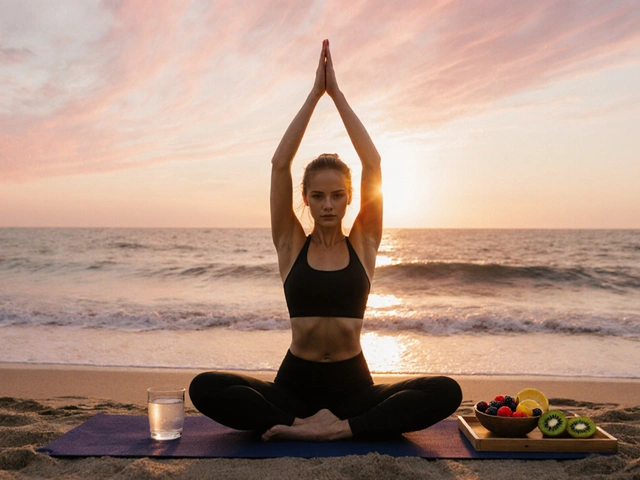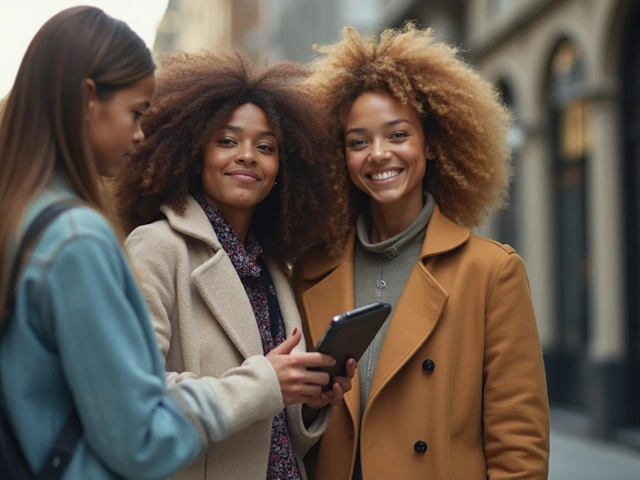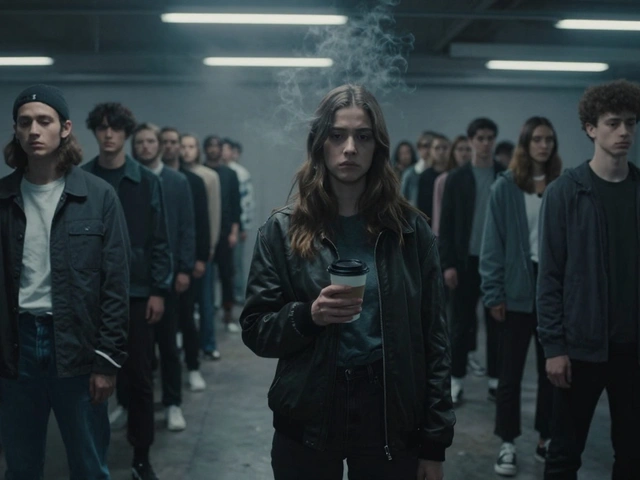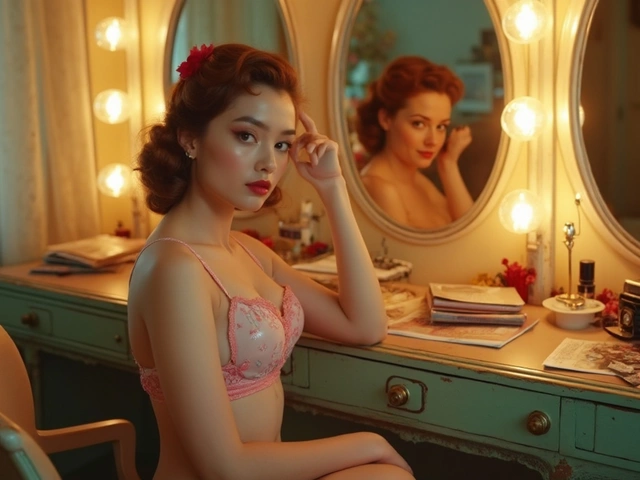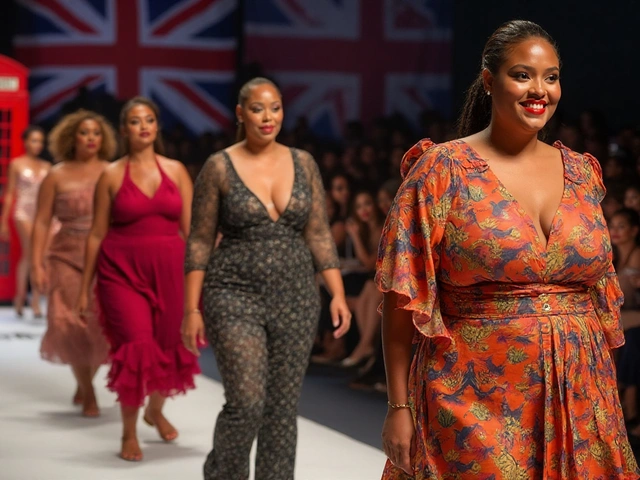Glamour modeling isn’t the same game it was back in the days of classic pin-ups or glossy magazines. Want to know what’s actually changed, and why it matters now more than ever? This isn’t just about pretty faces. Models today are influencers, business owners, and even activists—often all at once.
Some people still think glamour modeling is just about striking a pose, but it’s way deeper. The job now blends bold self-branding with a sharp eye for trends and a knack for using technology. Back in the 1950s, you might’ve made it big with a single iconic shoot. Today, you need thousands of followers, a sharp look, and a strong online voice. If you’re considering a start or you’re just curious how all these changes happened, you’re in the right spot.
- Key Takeaways: How Glamour Modeling Shifted
- What Defines a Glamour Model Today?
- From Pin-Ups to Instagram: A Quick Timeline
- Why It Matters: Impact on Culture and Fashion
- Tips for Aspiring Glamour Models Now
Key Takeaways: How Glamour Modeling Shifted
The world of glamour models has changed more in the last 20 years than in the 50 before that. In the past, glamour modeling was mostly about print magazines like Playboy and Maxim, where getting a single big feature could launch a career. Fast forward to now, and those magazines aren’t even in print or have gone digital-only. Today, models need a strong digital presence, and it’s all about platforms like Instagram, TikTok, and OnlyFans.
Back in the 1970s and 1980s, agencies controlled who made it big. Now, anyone can build a following online if they understand the game. Personal branding is king. Instead of just hoping for a casting call, modern models are their own producers, editors, social media managers, and marketers—sometimes all at once.
Here’s what really stands out:
- Exposure: Getting seen is about digital reach, not only print or TV. Models interact directly with fans, which never happened before.
- Control over image: Models decide what to share, when, and how, instead of only relying on publishers to choose every photo or story.
- Diversity: There’s more inclusion in body types, ethnicity, and gender, moving away from the narrow look that dominated the past.
- Income sources: Models now make money from many places—social media ads, private subscriptions, and brand deals—not just magazine shoots.
Stats back it up. A 2022 survey found that 68% of new glamour models earned more from online platforms than from traditional gigs. That’s a massive switch from the early 2000s.
| Era | Main Platform | Biggest Revenue Source |
|---|---|---|
| 1970s-80s | Print Magazines | Photo Shoots & Appearances |
| 1990s-2000s | TV & Print | Magazine Features & Brand Endorsements |
| 2010s-Now | Social Media | Online Content & Sponsorships |
So if you're thinking about joining the modeling industry or just want to keep up, knowing these changes is like getting the inside scoop.
What Defines a Glamour Model Today?
It’s easy to spot a glamour model in a glossy magazine or on Instagram, but what actually sets them apart today? It’s not just about a certain body type or look anymore. Now, it’s about personality, digital skills, and knowing how to create an eye-catching brand online. Glamour models aren’t waiting around for agencies—they’re building their own platforms every single day.
The definition has gotten a lot wider too. In the past, a glamour model usually worked in swimwear, lingerie, or artful nude shoots meant for adult magazines and calendars. Fast forward to now, and you’ll find models running their own OnlyFans pages, curating their own shoots, and landing sponsorships directly with brands. The magazine poster days are fading—direct-to-fan content rules the scene.
One thing that really sticks out is social media. A big following isn’t just for bragging, but for bookings and brand deals—no manager needed. Brands want models who can also sell, promote, and connect. For example, a 2023 study by Influencer Marketing Hub showed that 69% of brands prefer models with an active social presence over traditional agency-only talent. That number keeps growing.
Here’s what usually defines a modern glamour model:
- Confidence in front of the camera
- Strong sense of personal style—think signature looks or themes
- Skilled at social media—posting, promoting, engaging fans
- Comfortable with different types of photoshoots, including boudoir, swimsuit, or cosplay
- Ability to create, edit, and share high-quality content themselves
- Professionalism—meeting deadlines and brand expectations
Another thing that stands out: diversity. There’s no one “right” look anymore. Curvy, slim, tattooed, athletic—there’s room for everyone. The industry also supports more self-expression, not just fitting into a box someone else designed.
As a quick comparison, check out this overview:
| Past | Today |
|---|---|
| Magazines & Calendars | Instagram, OnlyFans, TikTok |
| Agency Representation | Self-managed, social presence |
| Standard Beauty Types | Diverse looks welcomed |
| Limited Fan Interaction | Constant engagement with followers |
So, if you’re thinking of getting into glamour modeling or just curious about its evolution—know this. It’s less about fitting a mold and more about building your own lane, owning your presence, and making real connections through your work.
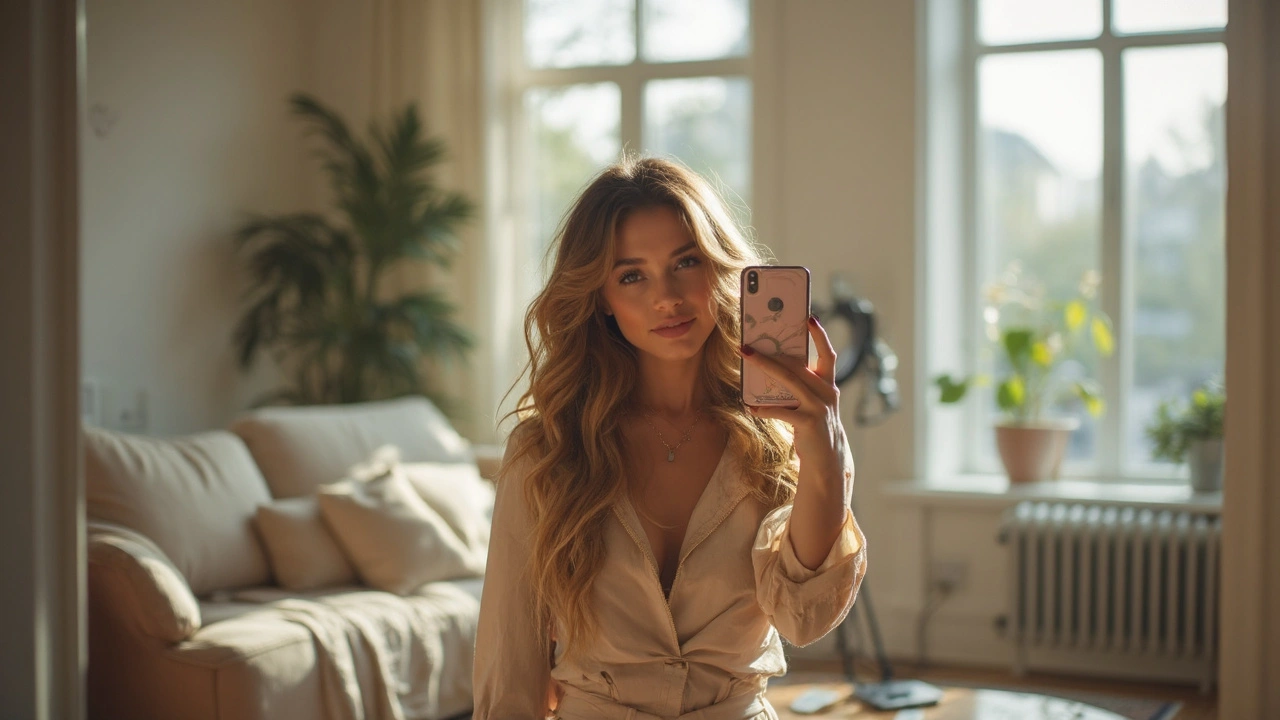
From Pin-Ups to Instagram: A Quick Timeline
The story of glamour models is packed with big shifts. Let's break down how we got from painted pin-up icons to TikTok-famous influencers. These turning points make it clear how much the modeling industry and glamour photography have grown to match what people crave at different times.
1940s–1950s: The OG pin-up girls set the tone for glamour. Think Betty Grable, whose WWII pin-up photo sold millions of copies, or Marilyn Monroe, who became a household name. These images were bold for their day, but compared to today, pretty tame. Most photos turned up in calendars, men’s magazines, and posters, with glossy lips and hourglass curves getting all the attention.
1960s–1970s: Things got edgier fast. The UK saw magazines like "Page 3" of The Sun make headlines with topless models, while Playboy magazine in the US launched careers for people like Pamela Anderson. There was still an emphasis on the "classic bombshell" look, but magazines now wanted bolder, more confident poses and interviews, hinting at the personalities behind the images.
1980s–1990s: Enter the supermodel era. Naomi Campbell, Cindy Crawford, and others worked both high fashion and the glamour models scene. Magazines like Maxim and FHM made "lad mag" culture big, and suddenly models were more than magazine filler—they were celebrities. Video killed the radio star, and TV brought models into homes with music videos and live interviews.
2000s: Reality TV caught on. Look at the rise of shows like "America’s Next Top Model"—a ton of fresh faces got their break here. The internet changed everything: ModelMayhem and online portfolios replaced old-school mail-in headshots. People didn’t need an agent to get noticed anymore; a camera and a connection was sometimes enough.
- In 2005, YouTube gave models a whole new way to show off their personalities, skills, and behind-the-scenes life.
- By the end of the decade, MySpace and Facebook pages helped models build their own brands instead of waiting for magazines to call.
2010s–Now: Social media is the big boss. Instagram, Snapchat, and now TikTok have blown the doors off what a glamour model can be. Kylie Jenner, though mainly a beauty mogul, used Instagram to build a $900-million brand, all starting with photos. Influencers aren't just posing—they’re launching clothing lines, sharing personal stories, and running their own online fan clubs (OnlyFans, anyone?). Agencies still matter, but now models can control their look, fans, and even income all on their own devices.
| Era | Main Platform | Famous Names | Defining Trait |
|---|---|---|---|
| 1940s-50s | Pin-ups/Magazines | Betty Grable, Marilyn Monroe | Classic beauty |
| 1970s-80s | Men's Magazines | Samantha Fox, Pamela Anderson | Edgy, bold |
| 1990s | Lad Mags/TV | Jordan (Katie Price), Jenny McCarthy | Celebrity status |
| 2000s | Online/Reality TV | Tyra Banks, Adrianne Curry | Accessible, DIY start |
| 2010s–Now | Social Media | Kylie Jenner, Demi Rose | Personal brand driven |
So, the days of needing a big-name magazine as your springboard are mostly over. Now, if you’ve got style, focus, and a good phone camera, you can reach millions. It’s a wild ride—and everyone from big agencies to self-made influencers is part of it.
Why It Matters: Impact on Culture and Fashion
You can’t really talk about glamour models without noticing how much they’ve shaped what people see as cool, bold, or even beautiful. Think about Marilyn Monroe in the 1950s—she wasn’t just a movie star, she set the standard for style and self-confidence for an entire generation. Fast forward to the '90s and early 2000s: names like Pamela Anderson or Cindy Margolis popped up everywhere, from TV to magazine covers. It’s proof that glamour modeling keeps raising the bar in pop culture.
What’s really wild is how social media totally flipped the scene. Today’s glamour models rely just as much on likes, shares, or viral posts as they do on photographers or magazines. The definition of glamour photography changed too. It’s now about creative self-expression, body positivity, and realness. For example, models like Ashley Graham and Demi Rose show their real bodies and talk openly about confidence. Even big brands jumped on board—Victoria’s Secret scrapped the traditional fashion show in 2019 to focus on more diverse, relatable talent.
Here’s a quick list of how glamour models shape our world today:
- They set off new beauty trends, from hairstyles to makeup tricks you see on TikTok.
- They push brands to include more body types, skin tones, and styles, driving inclusivity.
- They turn personal brands into real businesses, teaching self-marketing skills to millions.
- They open up conversations about mental health, self-worth, and modern relationships.
Curious about just how far their reach goes? Check out this simple breakdown of follows and influence:
| Model | Instagram Followers (2025) | Key Campaigns |
|---|---|---|
| Emily Ratajkowski | 31 million | Dior, Versace, DKNY |
| Demi Rose | 21 million | PrettyLittleThing, Oh Polly |
| Ashley Graham | 13 million | Lane Bryant, Swimsuits For All |
So, whether you realize it or not, the faces and voices of glamour models shape a lot of what you see in fashion stores, advertising, and even in the way you scroll your feed. That’s why this story matters so much, both for today and for what comes next.
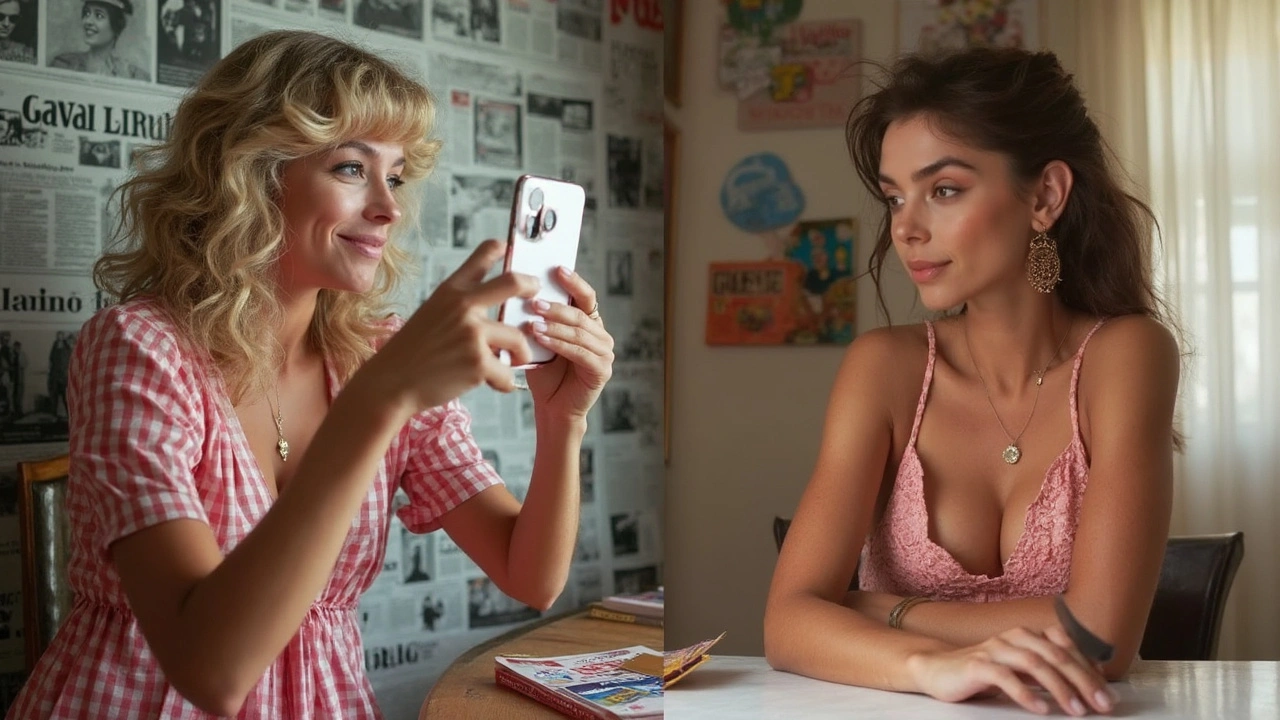
Tips for Aspiring Glamour Models Now
If you want to break into the world of glamour models, you need more than just good looks. The modeling landscape has changed fast, and you’ve got to move with it. Here’s a practical guide for getting started and surviving in the industry today.
- Build Your Personal Brand: Your image matters, but your vibe and personality count just as much. Choose a style you love and stick with it across your social channels. Consistency makes people remember you.
- Get Serious About Social Media: Instagram, TikTok, and even Twitter are now vital to your career. Models with over 100K followers get more exposure and deals, according to a 2024 survey by Model Alliance. Regular posting, authentic interactions, and sharp photos pay off.
- Work With Legit Photographers: Not every photographer is worth your time. Look for people with published work and proven reputations. Always research first, and never do anything you’re uncomfortable with—your safety comes first.
- Understand the Business: Read up on contracts and copyright. Know your worth before signing anything. One common rookie mistake: letting photographers have all rights to your images without asking questions.
- Keep Up With Trends: Trends come and go; right now, natural looks and less airbrushing are in. Stay open to new poses, styling, and creative shoots. Don’t get stuck in a rut copying what others do—find a twist that’s yours alone.
- Networking Is Key: Attend events, join groups online, and connect with other models. You’ll find gigs, collab opportunities, and learn from people who’ve been in the game a while.
Check out just how much digital matters now compared to the old school approach in the table below:
| Then (Pre-2010) | Now (2020s) |
|---|---|
| Mainly magazine features | Social media-driven careers |
| Agency-focused | Self-promotion and self-booking |
| Strict look standards | More diversity and authenticity |
| Print portfolios | Online portfolios/Instagram grids |
A final heads-up: Scams do happen. Any "agency" that asks you to pay money upfront or makes dodgy promises should raise a red flag. Real opportunities don’t require you to pay to play. If you're serious about being a glamour model, do the homework, stay sharp, and bring your personality front and center. There's space now for different looks and backgrounds, so there's never been a better time to try.
